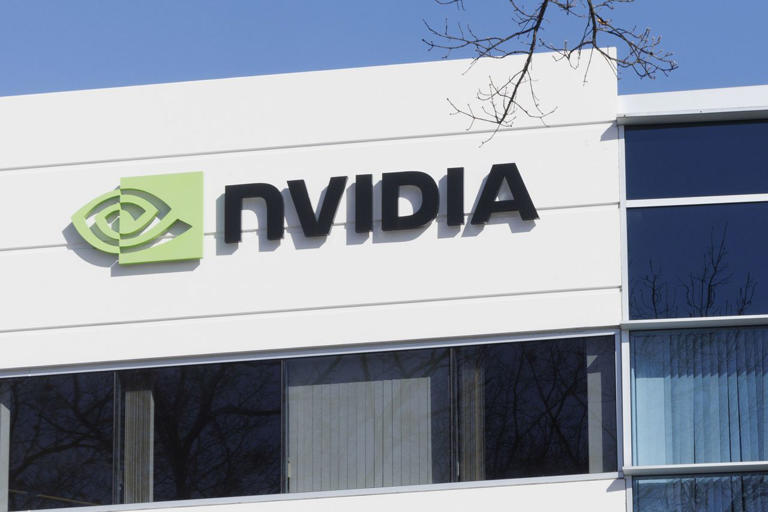Nvidia’s remarkable ascent has not only propelled the stock market to new highs but has also prompted discussions of the “B word” among some on Wall Street.
The growing excitement surrounding artificial intelligence technology has elevated Nvidia’s chips to essential status, making the company’s stock one of the hottest commodities in the market.
Since October 14, 2022, Nvidia’s stock has skyrocketed by more than sevenfold, propelling the company to become the third-most-valuable U.S. company, boasting a market capitalization exceeding $2 trillion. Following its blowout fourth-quarter results announced on February 21, Nvidia added nearly $280 billion in value over just two trading sessions. Remarkably, it took Nvidia only 180 trading days to transition from a $1 trillion valuation to $2 trillion, a milestone that both Apple and Microsoft took over 500 trading days to achieve.
In tandem with Nvidia’s surge, the company has become a favorite among retail investors. Out of the 59 Wall Street analysts covering the stock, 54 have rated it as a buy or outperform, according to FactSet.
Moreover, Nvidia’s success has had a positive spillover effect on other chip stocks. The PHLX Semiconductor Index has surged by 18% this year, with notable gains seen in companies like Advanced Micro Devices (up 37%), Lam Research (up 25%), and Broadcom (up 25%).
The Nasdaq Composite reached its first new high since 2021 on Thursday, while the S&P 500 has already achieved 15 record closes in 2024. This surge, with both indexes rising in 16 of the past 18 weeks, has sparked discussions among some Wall Street professionals about whether the growing enthusiasm is indicative of a classic stock bubble.
Emerson Ham III, senior partner at Sound View Wealth Advisors, noted an uptick in client inquiries about AI stocks and expressed caution, stating, “Whenever anything goes too well, I get nervous.” He has recommended chip stocks for his clients since 2018 and is now having conversations with them about taking some profits off the table.
Torsten Slok, chief economist at Apollo, went further, describing the current AI bubble as even larger than the tech bubble of the 1990s in a note to clients last week.
Despite differing opinions on the market outlook, both bulls and bears acknowledge Nvidia’s remarkable rise, driven by impressive profits. This sets the excitement over artificial intelligence apart from speculative frenzies of the recent past, such as cannabis or blockchain stocks.
In the most recent quarter, Nvidia reported a significant increase in profit, reaching $12.29 billion compared to $680 million in the previous three months ending in October 2022. Gross profit margins also surged to nearly 76%, up from 53.6% during the same period.
Despite these impressive numbers, Nvidia’s stock has actually become cheaper by some measures. Trading at 32 times its expected earnings over the next 12 months, according to FactSet, Nvidia’s valuation is lower than its two-year average of 38 times. In comparison, the S&P 500’s multiple stands at 20.6.
Joseph Zappia, principal and co-chief investment officer at LVW Advisors, emphasized that Nvidia’s performance cannot be classified as speculative mania, given its lower price-to-earnings ratio compared to a year ago. He noted Nvidia’s consistent execution in delivering results, which aligns with the bullish sentiment prevalent in the current market environment.
However, some analysts express concerns about Nvidia’s ability to sustain its rapid growth pace. With expectations of $107 billion in revenue for the fiscal year ending in January, up from $60.9 billion last year, there are worries about the longevity of chip demand from major tech companies. Additionally, fears of emerging competition from other chip makers could potentially impact Nvidia’s sales or margins.
Fred Hickey, editor of the High-Tech Strategist, highlighted Nvidia’s history of boom-and-bust cycles and expressed skepticism about its future growth potential. Despite acknowledging Nvidia’s impressive profits, he remains cautious and has bet against the company through long-dated put options purchased after last month’s earnings report.
Nevertheless, bulls point out a favorable factor working in Nvidia’s favor: the absence of new AI-themed initial public offerings (IPOs). Michael Sansoterra, chief investment officer at Silvant Capital Management, highlighted past dot-com era disasters like Webvan and Pets.com, suggesting that current market conditions are different, with few comparable IPOs.
Despite lingering concerns, few investors are actively betting against Nvidia, with just over 1% of publicly available shares sold short, according to Nasdaq data.
